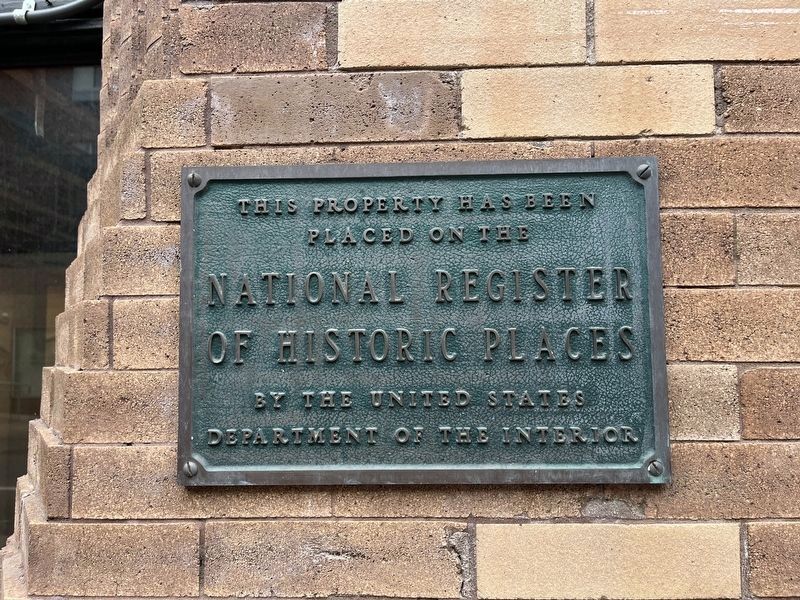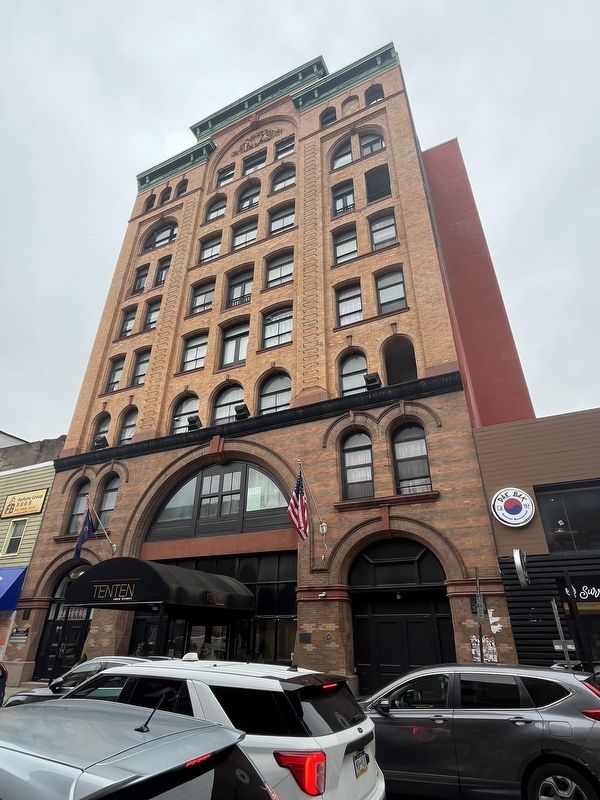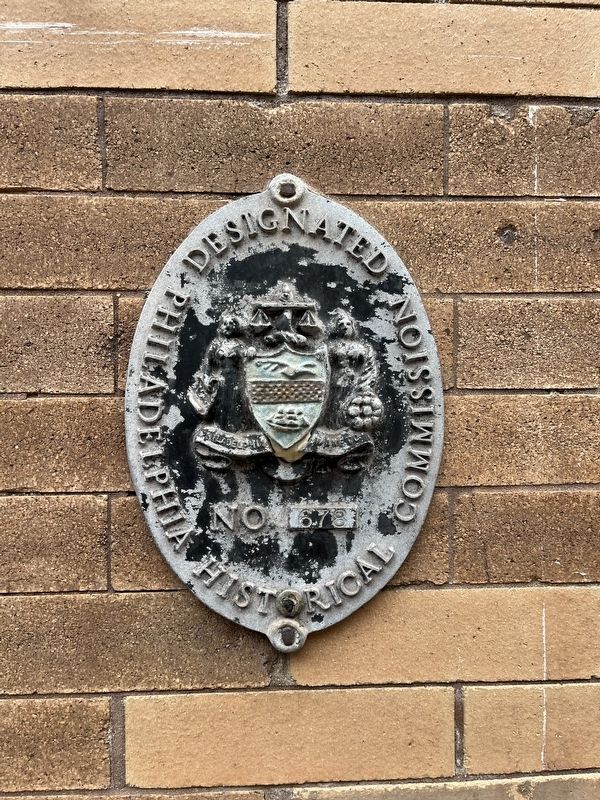Chinatown in Philadelphia in Philadelphia County, Pennsylvania — The American Northeast (Mid-Atlantic)
Heywood Chair Factory
1010 Race Street
placed on the
National Register
of Historic Places
by the United States
Department of the Interior
Topics. This historical marker is listed in these topic lists: Architecture • Industry & Commerce. A significant historical year for this entry is 1892.
Location. 39° 57.324′ N, 75° 9.39′ W. Marker is in Philadelphia, Pennsylvania, in Philadelphia County. It is in Chinatown. Marker is on Race Street just west of North 10th Street, on the right when traveling east. Touch for map. Marker is at or near this postal address: 1010 Race Street, Philadelphia PA 19107, United States of America. Touch for directions.
Other nearby markers. At least 8 other markers are within walking distance of this marker. Philadelphia Chinatown (about 400 feet away, measured in a direct line); Sigma Sound Studios (about 700 feet away); Choi Funeral Home (approx. 0.2 miles away); Friendship Gate (approx. 0.2 miles away); Reading Terminal Market (approx. 0.2 miles away); First African Baptist Church Cemetery (approx. 0.2 miles away); Dr. Constantine Hering (approx. 0.2 miles away); NFL Films (approx. ¼ mile away). Touch for a list and map of all markers in Philadelphia.
Also see . . . National Register of Historic Places Nomination Form.
This form was prepared in 1984 by George E. Thomas, PhD, of Clio Group, Inc. The statement can be found on pages 5 and 7:
The Heywood company began in Massachusetts, and was still listed as originating in Gardner, Massachusetts when its works were exhibited at the Centennial. In fact, the company had moved to Philadelphia as early as 1874 or 5, appearing for the first time at 802 and 804 Market Street in the 1875 Gopsill's Directory. Interestingly, the listing refers to the firm as "chair manufacturers (foreign)", presumably referring to the continental origin of the bentwood process which by the 1850s was well-known. In 1881 they were also listed as manufacturing children's carriages, while the Centennial judge also praised their settees and their "closely woven rattan work", materials which appeared in baby carriages and furniture of the period. By 1881 the company had removed to the northwest corner of Broad and Cherry Streets, across from the Pennsylvania Academy of the Fine Arts, in a newly developing commercial zone. A decade late r they were at 1010-14 Race Street — and still listed as "foreign". They remained on Race Street for almost a generation before moving in 1908 to another large building at 244-54 South 5th Street where they still were after World War I. Though they remained an important manufacturer and retailer, this changed location from a commercial to a manufacturing street in 1892 suggests a changed role for their products from one of fashion to one of utility by the end of the century.(Submitted on April 20, 2024, by Devry Becker Jones of Washington, District of Columbia.)
If the location of thefactory is explicable by a change in the public perception of bentwood furniture, the style and honorific quality of the exterior suggests that the owners were uneasy about their shift toward institutional and utilitarian buyers. Hence they chose to create an architecturally memorable building that was sufficiently enriched to remain a retail facility as well as a center of production. That task was given to Willis Hale (1841-1907), a veteran of the offices of such master ornamentalists as Sam Sloan and John MacArthur. By the 1880s Hale had become the principal designer for nouveau riche Philadelphia with Peter Widener's great mansion at Broad and Girard and numerous impressive rows in North Philadelphia to his credit. His commercial work was equally notable, and includes the Union Trust Company on the 700 block of Chestnut, the Independence Trust on Walnut, and the Keystone National Bank at Juniper and Chestnut Streets. Each pushed contemporary taste to its limits, merging a variety of historical motifs and materials in a powerfully eclectic synthesis unrivalled in Philadelphia. It was from that background that the Heywood Chair Factory came. In the 1890s, Hale's work accommodated some of the changes toward more aesthetically pleasing and less individualistic works in the manner represented by Wilson Eyre and Frank Miles Day. Tan brick, delicate features derived fromPhotographed By Devry Becker Jones (CC0), April 19, 20242. The Heywood Chair Factory at 1010 Race Streetthe Queen Anne and pressed metal trim in the fashion of the Colonial Revival were part of the changes and appear on the Heywood Factory.Photographed By Devry Becker Jones (CC0), April 19, 20243. Philadelphia Historical Commission Designation Plaque
Credits. This page was last revised on April 20, 2024. It was originally submitted on April 20, 2024, by Devry Becker Jones of Washington, District of Columbia. This page has been viewed 47 times since then. Photos: 1, 2, 3. submitted on April 20, 2024, by Devry Becker Jones of Washington, District of Columbia.


